Episode 4: Living
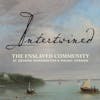
Episode 4: “Living”
Kate, her husband Will, and their children lived and worked on Muddy Hole Farm. When her family suffered a tragedy, they drew strength from the kinship ties and friendships they shared with other members of Mount Vernon’s enslaved community. In this episode, we examine daily life, culture, and religious practices of the enslaved people at the plantation. We also explore how on-going archeological work at Mount Vernon helps us piece together the enslaved community’s lived experience and recover their voices when the written record falls silent.
Featuring:
- Dr. Brenda Stevenson, Hillary Rodham Clinton Endowed Chair in Women’s History, St. John’s College, Oxford University
- Dr. Eleanor Breen, City Archaeologist, City of Alexandria
- Dr. Kelley Fanto Deetz, Director of Collections and Visitor Engagement, Stratford Hall Plantation, and Director of Education and Historic Interpretation, Virginia’s Executive Mansion
- Mary V. Thompson, Research Historian, Fred W. Smith National Library for the Study of George Washington
- Dr. Jason Boroughs, Research Archaeologist, George Washington’s Mount Vernon
- Dr. Marcus Nevius, Associate Professor of History and African Studies, University of Rhode Island
- Jessie MacLeod, Associate Curator, George Washington’s Mount Vernon
Full transcripts, show notes, and bibliographies available at www.georgewashingtonpodcast.com.
Intertwined: The Enslaved Community at George Washington’s Mount Vernon
Episode 4: “Living”
Co-written by Jeanette Patrick and James P. Ambuske
FINAL TRANSCRIPT
Episode Published 11/29/2021
SPEAKERS
- Brenda Parker, Coordinator of African American Interpretation and Special Projects, George Washington’s Mount Vernon
- Brenda Stevenson, Hillary Rodham Clinton Endowed Chair in Women’s History, St. John’s College, Oxford University
- Eleanor Breen, City Archaeologist, City of Alexandria
- Kelley Fanto Deetz, Director of Collections and Visitor Engagement, Stratford Hall Plantation, and Director of Education and Historic Interpretation, Virginia’s Executive Mansion
- Mary V. Thompson, Research Historian, Fred W. Smith National Library for the Study of George Washington
- Jason Boroughs, Research Archaeologist, George Washington’s Mount Vernon
- Marcus Nevius, Associate Professor of History and African Studies, University of Rhode Island
- Jessie MacLeod, Associate Curator, George Washington’s Mount Vernon
BRENDA PARKER: This podcast is supported by anonymous friends of George Washington’s Mount Vernon.
PARKER: “his death I much regreted because he was a promising Boy”.
That is how William, son of Kate and Will, was remembered by George Augustine Washington, Mount Vernon’s farm manager. According to a letter, William was sick for about seven days with a pain in his back before he passed away.
The devastation Kate and Will felt by the loss of their son wasn’t recorded. But anyone who has lost a loved one can probably relate to their pain, I know I can.
Despite their enslavement, Kate and Will formed a connection and built a family together. They lived and worked together on Muddy Hole Farm. Kate in the fields and Will as an overseer. They were surrounded by a community of people enslaved by the Washingtons, the Custis Estate, and on neighboring plantations.
When they lost part of their family in 1792, their community would have mourned with them. The community would have also celebrate with Kate each time she had a child. We know she gave birth at least five times.
People enslaved at Mount Vernon and beyond found ways to maintain customs and community; to affirm their humanity in a world that denied it. Music, storytelling, and religion provided an emotional outlet and a way to carry on traditions. Some of these practices were from Africa, others forged during years of enslavement.
In the life-altering moments of birth, illness, and death, people cared for each other.
Just like today, people built communities based on blood, shared experiences, and love. They gathered to celebrate and to grieve. And together, through their relationships, they were resilient.
I’m Brenda Parker, Mount Vernon’s Coordinator of African American Interpretation and Special Projects.
And this is Intertwined: The Enslaved Community at George Washington’s Mount Vernon.
Episode 4: “Living”.
Life differed for each person experiencing enslavement. Some people lived in large groups, like those found at Mount Vernon. Others lived in rural areas miles away from people who looked like them. And still others lived in cities, like Philadelphia, where there were communities of free people of color. A person’s location and their enslaver drastically impacted where they lived, what they ate, and who made up their community.
BRENDA STEVENSON: Well living conditions for enslaved people varied a great deal. It really came down to almost the owner and the numbers and enslaved people that you have.
Brenda Stevenson, Hillary Rodham Clinton Endowed Chair in Women's History, St. John's College, University of Oxford.
You have someone who can afford to have large numbers of enslaved people, can afford to house large numbers enslaved people, can afford to feed large numbers of enslaved people, and clothe them as well. But if you have someone who's just a poor farmer who has maybe one or two people, they're not gonna have a separate cabin for these one or two people, these people are gonna sleep on the floor somewhere, maybe in a celler, maybe in a tobacco barn.
They're gonna have the minimal when it comes to clothing, when it comes to shoes. They're probably going to have to feed themselves, that is, they're gonna have to go out and hunt and fish, and they'll get a little food allowance but not a significant food allowance. You're gonna have your domestic slaves or the people who are gonna be at Mount Vernon living in something that looks like a brick dormitory. And everybody's gonna have a pad to sleep on and all that. You're not gonna have very much privacy, 'cause there are lots of people in one room.
You're gonna have people who can have families on or nearby, because you've got 200, 300 enslaved people, so there’s families are going to develop. You're gonna have an ability to have children. So those are all the positive things, if you can say anything's positive about slavery.
If you've got two people living somewhere out in, I don't know, some far Fluvanna County or some more rural county or something like that, living further in other places of the northern neck or in the west then going towards Shenandoah, then these people are going to have to spread out to find a wife. They're gonna have an abroad marriage, if they can have that, they're gonna only see their families on a half a day on Sunday, because they've gotta get permission to be able to travel to see their wives and children. They're not gonna have control any day-to-day interaction with families and that kind of thing. They're not going to be able to pool their resources and share their food or their clothing either. So they're not gonna be able to comfort the person if they are whipped or if they're sick or a fear of being sold away or traded so the experiences can be very very different.
PARKER: Even within one plantation, experiences varied. On the four outlying farms of Mount Vernon, archival and archaeological evidence indicates that people primarily lived in rough, one-room log structures with wooden chimneys. Sometimes these buildings were a bit larger and split into two rooms. Each room housed a different family. Within these log cabins, people slept on a simple pallet or the dirt floor.
On Mansion House Farm there were some cabins, but mostly people lived in communal buildings. First in the house for families, then in the brick wings of the greenhouse. While these structures housed dozens of people in an efficient manner, they did not allow privacy.
Today the house for families cannot be seen above ground, but a record still exists below.
ELEANOR BREEN: The house for families slave quarter was an archeological site that was initially found during this broader plantation survey in the 1980s, and was initially partially excavated and then archaeologists came back and later in the 1980s to complete the excavation. And it is represented in the ground by one small 6 x 6 foot brick line cellar. So the building was probably 4,000 square feet or larger.
Eleanor Breen, City Archaeologist, City of Alexandria.
It's a building that we know so little about that we don't even know when it was built. Historians and archaeologists have speculated that it may have been constructed actually during Lawrence Washington's tenure at Mount Vernon, and that's George Washington's elder half-brother. And that's because we don't have any documentation during George Washington's lifetime of the building being constructed. The archeological record, the artifacts at the very bottom of the cellar suggests that it started to get filled in about 1759, and that the building stood at Mount Vernon up there on the north lane, kind of across from the blacksmith shop until about 1792 when it was removed to construct the greenhouse slave quarters that stands today. So it's sort of the precursor to the enslaved quarters that you see when you visit the plantation today.
Archaeologists are always excited to find sealed features like cellars particularly that relate to the enslaved people that lived in the building above them, because they're like time capsules. They're really well-preserved, not too much disturbance in there, and contain a record of the daily lives of the enslaved people that were living in the house for families. And so those people probably would have been assigned to work in the mansion, in the kitchen, and the various activities at Mansion House Farm. And so within this about approximately three feet of refuse were thousands of artifacts. Many of those were actually faunal remains, or animal bones, thousands of animal bones that allowed us to understand the diet of enslaved people, and then artifacts that suggest to us what people owned and threw away into the cellar site.
PARKER: Archaeology is an incredibly important tool in understanding the daily lives of people in past. This is especially true for people who could not leave their own written record.
Most people enslaved at Mount Vernon were illiterate. And often we can only reconstruct their lives from the perspective of their enslavers. Archaeology adds another layer to the story.
Take daily rations. We know from the written record that the standard daily ration for an adult, enslaved at Mount Vernon, was one quart of cornmeal and five to eight ounces of salted fish. When we combined this information with what archaeologists found in the cellar of the house for families, we get a more accurate understanding of the diet of those who lived there.
BREEN: Within the House for Family cellar, I think that there were about 80,000 animal bones excavated, and so I'm not trained to analyze them in archaeology, that's a specialty called zooarchaeology. These are the scientists that have a specialty in studying faunal remains. And what they do is identify all those bones to the species level. So they were able to see 55 species represented within the cellar. If you think about rations and we know from the documents, what the archeological record started to reveal is that enslaved people were also taking on that additional step of procuring and supplementing their rationed diet through hunting, fishing, gardening. I think that there were over 33 species of nuts and seeds and plants also excavated from the cellar as well.
And so we're starting to see the emergence of a slightly richer diet than we understood just from the historical documents, but it's a richer diet only because in enslaved people are taking the extra time and energy to garden small plots of land, to go out hunting and fishing, in their time that they're not working at their particular task assigned. People have called it free time, I'm not sure that that's the right word for it, but thinking of the time outside of work and how enslaved people are choosing to spend that time really became an essential part of what was learned from excavations in the cellar. I think when the House for Families was originally excavated, the faunal assemblage was one of the largest and most significant assemblages that had been excavated at that time. The findings from it really reverberated as additional sites like this were excavated in the Chesapeake region, so a foundational site.
PARKER: With a more complete picture of the ingredients people had access to, we can begin to explore foodways in the Chesapeake Bay region.
Foodways is how we examine food, history, and culture together. By exploring how food was produced and eaten, we can better understand a community.
Here is Dr. Kelley Fanto Deetz Director of Collections and Visitor Engagement at Stratford Hall and the Director of Education and Historic Interpretation at Virginia's Executive Mansion.
KELLEY FANTO DEETZ: The food that was served in the planter house was very different than the food that was being eaten in the quarters. What enslaved people did on plantations is they tried to create some sort of resemblance of what they ate in their homelands. And if you think about the importance of food and how it makes you feel at home, when you think about the grotesque conditions of enslavement and the need to recreate some sense of comfort at the end of the day. This was one of the methods in which enslaved African and African Americans persevered enslavement.
So for instance, a typical plantation, the overseer would hand out rations every week. In Virginia, you might get a little bit of corn meal and some fat back, and that's what you would get. Each person would get that as a ration for the entire week. What the enslaved community did is they would go and they would set up traps to hunt for animals in the woods. They would go fishing if they were near water. They had garden plots in and among their slave quarters to be able to subsidize the food that they were getting from the overseer.
Their ability to make something out of nothing, I think is the essence of their culture, during the period of enslavement, and they were able to do things like if you only had a little bit of food that was given to you, they recreated these one-pot meals. Things like gumbo, things like any of the one-pot stews that were very, very common and prevalent throughout West and Central Africa during the period of enslavement, they were able to recreate those in the space of a slave quarter. So for instance, if you had a little bit of fat back and some corn meal and that's all you've had collectively, you can turn that into something else. You can get maybe an animal that was caught in the woods that night can be brought in and put into that pot. You can have some fish that someone might have caught the night before that could be put into that pot. It was this kind of collective effort that helped enslaved people survive enslavement literally and figuratively. It gave them a sense of home, of community, and it allowed them to really survive in a system that was given them very little to survive on. And it was a way that they could recreate the cultures of West Africa in a space together collectively.
PARKER: Just like we do today, people in the 18th century used food as a way to build community and spend time together. Meals created a time when Kate and Will could come together with their children and be a family. While their legal status could not be changed by a meal, it might have brought a moment of comfort and peace.
More, when Intertwined returns after the break.
JEANETTE PATRICK: Hi I’m Jeanette Patrick one of the co-creators of Intertwined. If you would like to explore the topics discussed in this episode, learn more about our guests, or get a list of related readings, please visit George Washington podcast dot com.
Thank you for listening. Now, back to Intertwined.
PARKER: Food wasn’t the only ration people enslaved at Mount Vernon received. They were also given clothing. Each year a man got one wool jacket, two pairs of breeches, two linen shirts, one or two pair of stockings, and one pair of shoes. A woman received one wool jacket, two skirts, two linen shifts, one pair of stockings, and a pair of shoes. Children were only given a shift, a simple long shirt, until they got their formal work assignment. That’s it. For an entire year, people were expected to wear the same thing day after day while doing hard physical labor. And in most cases, this clothing was produced at Mount Vernon. Enslaved seamstresses, including Betty and Alice, were required to make a specific number of garments each week or risk punishment.
However, there were some positions that required different clothing. People who worked in the mansion or closely with the Washingtons were highly visible, so they were provided more and better-quality clothing. Waiters like Christopher Sheels wore a three-piece white-and-red livery suit, stockings, and black leather shoes with buckles. Housemaids like Ona Judge wore simpler versions of the gowns Martha Washington owned. Like with food, people found ways to add to what little they were given and make it their own.
Mount Vernon’s Research Historian Mary V. Thompson explains.
MARY THOMPSON: Small stores in various local communities would often do business with enslaved people, who would come in to buy maybe a scarf or a little article of clothing that would make them look better or make them feel better about themselves. They might buy a cup or something from the store, some dishes. They could be buying maybe some food-related products that they wouldn't ordinarily get, so they might buy sugar, they might buy maybe tea, spices perhaps, and they could also trade things with the store. Either they could be paid in money or they could be paid in the equivalent in goods.
There's a lot of evidence from Washington's account books that he and other plantation owners bought food stuffs from their slaves who might be growing them in their gardens. There's a lot of purchase of eggs and chickens and things from enslaved people, and then there are references to slaves at Mount Vernon buying whiskey from George Washington or buying some sort of food-related items from George Washington. So there are a lot of different things that they might be buying.
BREEN: Archaeologists began to excavate sites of enslavement like quarters and other places, and see sort of a broad range of consumer goods used and discarded in them. Wide ranges of buttons, for example, of ceramic plates, bowls, glassware, and things that were beyond what we knew that enslaved people were being provisioned. At the same time, historians and archeologists started to look in store ledgers and see enslaved people actually starting to engage in the consumer economy as well. Those enslaved people also used some of their free time to grow plants, grow crops, which we know from documents sold to Washington for cash, sold to other people for cash, so they have small amounts of money that every once in a while get recorded on ledgers as going into stores and making purchases of their own. This has been pretty thoroughly examined by a scholar named Ann Smart Martin. She writes about an enslaved person named Suckey in the backcountry going into a store and buying a mirror and a ribbon, and that's recorded in the ledger.
And so with every artifact that's excavated from a site like the house for families we can never know for sure, but we can begin to think about how did that artifact make its way into the ground? Was it an outright purchase with cash? Was it traded for? Was it stolen? And Washington certainly had a lot of fears about that and writes about that in some of his documents, or was it specially provisioned? And so for example, did that enslaved person have some kind of closer relationship to the Washingtons and essentially receive a hand me down? And we think we see that in the archeological record, particularly with a ceramic ware type called white salt glazed stoneware that we know Washington buys a lot of in the 1750s. We don't see it in the trash deposit behind the kitchen, we start to see those that ware type show up in the House for Family slave quarter. So is that an example of special provisioning? And so the 18th century is really a time when goods are moving rapidly around different communities, and archaeologists and historians are very interested in how people are acquiring things through the consumer economy and through other special avenues and how they're ending up in different sites throughout Virginia.
PARKER: These accessories were a way to express personality and give people some control over a small aspect of their life.
Archaeological work continues at Mount Vernon. Current excavations will hopefully help us better understand how enslaved people built family networks across the farms.
JASON BOROUGHS: We're currently working on excavating one of the outer quarters on a surviving fragment of a quarter of Union Farm. Seventy six people were living there in 1799, including 30-something children, so it was a very vibrant, active place.
Dr. Jason Boroughs. I am the Research Archaeologist at George Washington's Mount Vernon.
We know from historical documents and from what descendants of the enslaved folks have told us that about two-thirds of enslaved adults in 1799 were married. Of that group, only one-third of that population was able to live under a common roof, under a shared roof on the same farm, you basically lived where you worked. That means that two-thirds of enslaved marriages occurred with people that lived in different places, so they basically traveled back and forth at night, on Sunday, the day off, and on holidays like Christmas and Easter.
Washington we know actually encouraged marriages amongst the enslave folks. And it's something that he recognized, although enslaved folks are formally disenfranchised of marriage under Virginia law at the time, it was a common social practice, it was recognized by the enslaved community and by Washington.
PARKER: Encouraging marriage on plantations was not unique to Mount Vernon. Marriages strengthen family networks, and might have served as a deterrent if someone was considering running away. It could also lead to more children being born enslaved, which would increase the owner’s wealth.
Back to Dr. Boroughs.
BOROUGHS: Since we've started excavating at Union Farm, we found items there that have mates here at Mansion House Farm. So that suggests to me that people are sharing resources and you have to think of this community as kind of a large neighborhood of extended family networks and people are walking back and forth at night, Washington actually complained about that, how much people walked at night and how tired they would be not able to work the next day. As an archaeologist, I'm starting to find things at that form did actually have identical twins at this farm. We're starting to look for resource pooling and sharing, and that's a way of tracking some of these family lines as well.
And we're doing a lot of that with the cemetery project, for example. So if your family is split amongst different farms, and I should say that children lived wherever the mother was, when one of your family members dies where are they buried? Are they buried on that farm of residents for one spouse or they buried where you might have other family members on a different farm. So, a historical example, one of the husbands at Union Farm had a wife that lived at Muddy Hole Farm, one of the other five farms, she actually passed away and instead of the children coming to live with him, they lived with another relative on River Farm and that suggests that these family networks are extremely complex. So we're starting to kind of document materials that follow those family lines, which again, we're fortunate to have those documents that you just don't have on other plantation settings, so we're able to make connections that would be more difficult otherwise.
STEVENSON: There are all kinds of families that develop, and so what we see happening is family and marital traditions that we find in West and Central Africa, transported to the Americas with enslaved people, but we also see ideas about marriage and family that are being imposed or exist as examples that are coming from Europe, that are coming from Britain as well. And so we will see families develop, for example, George Washington is a wonder to us as historians who do social history, because he keeps a slave list and he indicates family relations, and we can see that even on his property, between him and Martha Washington, there are many families that developed husbands, wives, children, grandchildren, etc., and we also see people who are just husband and wife, we also see people who are just mothers and children, we see people who are single. So we see all these kinds of iterations of family.
What's very important, I think when we think about enslaved people because of their cultural heritage, but also because of the kinds of working and living conditions that they had as enslaved people with extended families. So we see people who are taking in orphan children, for example. They take them in because they wanna help them but also sometimes the owner will say, "You need to take care of this child." Their mother's dead, the mother is no longer with them, etc. So we see that happening. We see grandparents who are taking care of children. We also see fictive kin developing in male groups, because young men, were often sold when they're like 12 or 13 or moved to another outlying farm or something like that, and they live in houses where there's like five or six guys. They're like from the age of 12 to the age of 30 or something like that, so we have all gender kinship groups that are developing and saying for women, because women who may work in the house, for example, or working the same gangs together, they look out for one another. They exchange information, they exchange resources, they act as midwives, they act as counselors.
So we see what we think of as traditional family styles, we see the nuclear family, we see the marriages, but we also see fictive kin networks, we also see extended kin networks, and we don't see it relegated to one geographical space that is one farm or one plantation. What we do know is that these family networks, friend networks, community networks were really vast. County-wide and sometimes even crossing over counties. It's amazing how people are able to walk so much, there's a lot of "night walking" that's going on. There are a lot of religious ceremonies and rituals that are going on at night, and of course, the long break that comes at in the winter, around Christmas, for example, allows people to reconnect with one another. We also see it in the colonial period, we see some polygamy, and we also see serial monogamy, because people are often sold away, and so they re-marry and then they re-marry again. And this is something that happens not only in the colonial period, but particularly in the early period of Early Republic and at the antebellum period, because so many people, particularly from Virginia, are part of the domestic slave trade and are sold to the lower south and the south west. And so we see many, many cases of serial monogamy.
PARKER: As Dr. Stevenson explained, family make-up varied across the country. We see this variation at Mount Vernon too. Labor dictated life not love. And families often formed based on who was allowed to be present. Despite the control on their lives, people found ways to enjoy time with those they loved.
THOMPSON: They did get some rest on their one day off or in the evenings. And so there's evidence of telling stories just about their lives in Africa for the ones who had grown up there and been brought to America. Telling stories, sitting around, smoking pipes, playing games, marbles seems to have been pretty popular. And there's evidence for people getting together and maybe dancing, at least socializing. We know that music tended to be a very important part of African American culture, the archaeologists have found bits and pieces of musical instruments that they might have used. We had some great descriptions of slaves playing music and dancing here at Mount Vernon in the 19th century, of singing and that sort of thing. We wish we had them for the 18th century, but we just don't.
PARKER: Enslaved people also spent what time they had practicing religion.
MARCUS NEVIUS: Religious practices in Black communities in the 18th century would have largely been a fusion of cultural retentions from Africa and elements of Christianity that resonated with Black people, and that slowly would have changed over time.
I am Marcus Nevius, newly promoted Associate Professor of History and Africana Studies at the University of Rhode Island.
By about the 1760s increasingly, there are forms of Black Christianity that looked quite different than 30 years prior. That enslaved people would have had in some contexts, a little time for religious practice because for six days of every week, they were laboring from sunrise to sunset, and then in the interim, between sunset and sunrise again, they were home. Whatever home might have been, taking care of domestic concerns, getting a few hours of rest before rising and laboring again. But by the American revolutionary period enslaved Africans and free Black people in Virginia would have begun to celebrate significantly, Easter and Christmas especially. And that into the 19th century becomes part of the Black religious tradition as well.
THOMPSON: At Mount Vernon, there are towards the end of Washington's life, references to several religious groups, Baptists, Methodists, and Quakers, working among the enslaved people at Mount Vernon. There were slaves from Mount Vernon who were members of those churches, or at least hanging out with people from those churches. And there was an enslaved person at Mount Vernon at the end of Washington's lifetime, his name with Caesar. He lived on the Union Farm. And he ran away several times, and in a letter that he was writing about Caesar running away, Washington says that he usually dresses in black and white, which may have been him trying to show that he was a minister, we don't know. He could read, he could write, and he was very well known in the neighborhood because he preached to other enslaved people. So there is spiritual leadership just kind of growing up on the plantation
We don't have an exact figure 'cause this isn't the sort of thing that slave owners paid much attention to, unless it was causing a problem. So up until the end of the 18th century, masters really don't care unless religion is causing a problem. Depends on who you talk to, but roughly 10 to 15, even as much as 20 percent of the enslaved people who were here in the 18th century were Muslim, and we've got mostly name evidence for that from Mount Vernon. Not so much a direct statement that this enslaved person was Muslim and could write Arabic and that sort of thing, that happens on some plantations, but not here.
PARKER: In 1774, Washington records a list of tithables, or taxable properties, included on the list are Fatimer and littler Fatimer. Historically, Fatimah was the daughter of the prophet Mohammed.
We also don’t have any details of what many of these religious practices actually looked like. Unfortunately, records describing services or prayers at Mount Vernon don’t exist.
There are also not many records of what children enslaved at Mount Vernon did with their time before they received a formal work assignment. We suspect Kate’s children William, Molly, Virgin, and Kate spend these years looking out for each other and doing chores while their parents worked.
THOMPSON: Children generally started working, Washington put them into a group called "Working Boys and Girls", somewhere between the ages of 11 and 14. And after 14, most go into their adult assignments. Up until the age of 11, it looks like a lot of times older children would have looked after the younger ones and taken care of them. Sometimes it looks like there's an older elderly person who can no longer work at a regular job, making sure that the kids get fed and they're not getting hurt and that kind of thing. There are several references Washington has to not wanting them too close to the Mansion House because they like to play in and around his trees and shrubs. And it sounds like they're sword-fighting with sticks and stuff like that, and he's really worried that they're hurting the plantings that he's been working so hard to get established and so it sounds like they're playing, they're kids. Their parents might well have given them jobs they need to do in and around their cabins, so perhaps weeding a garden or feeding chickens, and hauling water to the cabin, they might have had to help with some food preparation during the day.
PARKER: While children might have had a little freedom, the harsh reality of slavery was all around them. No matter how hard they tried, their parents could not protect them from everything.
Despite this, people, including Kate, did all they could. Even after tragically losing her son William, she wanted to ensure other children were given an opportunity at life.
Here’s Jessie MacLeod, Associate Curator at Mount Vernon.
JESSIE MACLEOD: In 1794, Kate actually approaches George Washington through her husband. She has her husband speak to Washington and he asked if Kate can serve as the midwife for the enslaved community. And she has come up with an argument that she thinks will appeal to Washington. She says that she's just as skilled as the white women that he had been hiring to be midwives and who he's been paying 10 to 15 pounds a year, and now she can save him money, she's just as good at the job, and Washington basically says to his farm manager, look into it, she is skilled enough to do this, then she can do it. So it seems that Kate was able to act as the midwife for the next few years at Mount Vernon. I think that's a really important moment because, A, it shows this inside woman exhibiting assertiveness and asking for the role that she wants, and it also is a moment when this really important role within the community, it comes back to the community. It was no longer these hired white women who were coming in from outside, it was somebody within the enslaved community who is helping the other women give birth, which is of course, this incredibly intimate and at times traumatic experience. And so I think that's a really important thing to consider is how Kate is bringing that role back within the community.
PARKER: Since Kate didn’t leave a written record, we don’t know why she wanted to act as midwife, but it was clearly important to her and her husband. By taking on this responsibility, it allowed for an important role to be undertaken by a member of the community instead of an outsider.
It is difficult to trace Kate in the records as it was a common name. She was probably owned by Washington, and along with her surviving children, Molly, Virgin, and Kate, freed in 1801.
Her husband Will is believed to have been owned by the Custis Estate. He would have been inherited by one of Martha Washington’s grandchildren. Still enslaved.
When a community cannot record their side of the events, we are left with what does remain. At Mount Vernon, we are fortunate to have detailed reports of people enslaved here. They give us a view into daily life. But it is important to remember, these documents only show one perspective. We must read the silences, examine the physical evidence, and listen to oral histories. Even then, we will not fully understand what life was like for Kate and her community.
Resisting enslavement was also part of daily life. While larger acts of resistance, like self-emancipation, often get recorded, smaller, everyday acts of defiance shaped Mount Vernon’s world just as much. How and why is next time on Intertwined: The Enslaved Community at George Washington’s Mount Vernon.
Intertwined: The Enslaved Community at George Washington’s Mount Vernon is a production of the Mount Vernon Ladies’ Association and CD Squared.
I’m your host, Brenda Parker.
Intertwined was co-created and co-written by Jeanette Patrick and Jim Ambuske.
Curt Dahl of CD Squared was our lead producer and audio engineer.
Additional producers were me, Brenda Parker and Jessie MacLeod. MacLeod was the lead curator of the Lives Bound Together exhibit, which inspired this podcast.
Mary Thompson provided invaluable research support. Thompson is Mount Vernon’s research historian and the author of “The Only Unavoidable Subject of Regret": George Washington, Slavery, and the Enslaved Community at Mount Vernon, published by the University of Virginia Press in 2019.
We received fact checking and additional editorial support from Samantha Snyder.
Rebekah Hanover Pettit designed our show’s beautiful artwork.
Thank you to Mount Vernon’s Media and Communications Department for their support.
Our summer interns were Izzy Black and Maggie-Mae Ellison from Midwestern State University in Texas. They helped put together our show notes and episode bibliographies.
Thank you to the Mount Vernon Ladies’ Association.
And a very special thanks to the anonymous friends of George Washington’s Mount Vernon without whose financial support this project would not have been possible.
Learn more about Mount Vernon’s enslaved community and topics covered in this program by checking out our reading lists on our show’s website at George Washington Podcast dot com.
Thank you for listening.
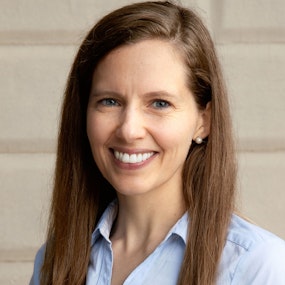
Jessie MacLeod
Associate Curator
Jessie MacLeod joined Mount Vernon’s curatorial team in 2012, after receiving an M.A. in history, with a certificate in public history, from the University of Massachusetts Amherst. She previously received a B.A. in history from Yale University and has worked at numerous historic sites interpreting eighteenth and nineteenth-century American history. In her time at Mount Vernon, Jessie served as lead curator for the award-winning exhibition Lives Bound Together: Slavery at George Washington’s Mount Vernon (2016-2021).
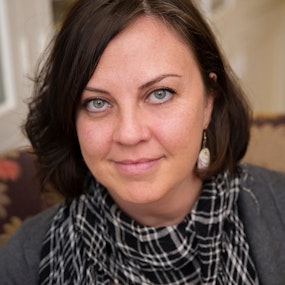
Dr. Kelley Fanto Deetz
Director of Collections and Visitor Engagement, Stratford Hall
Dr. Kelley Fanto Deetz is the Director of Collections and Visitor Engagement at Stratford Hall, as well as the Director of Education and Historic Interpretation at Virginia’s Executive Mansion, and a Visiting Scholar in the Department of African American Studies at U.C. Berkeley. She holds a BA in Africana Studies and History from The College of William & Mary and an MA and Ph.D. in African Diaspora Studies from the University of California at Berkeley. She is the author of the critically acclaimed book Bound to the Fire: How Virginia’s Enslaved Cooks Helped Invent American Cuisine, which was named as one of the top ten books on food of 2017 by the Smithsonian Magazine. You can find her most recent work in Audible’s The Great Courses on the history of sugar, and her contribution to the forthcoming cookbook California Soul, with celebrity chef Tanya Holland and Alice Walker.
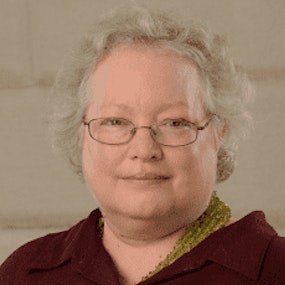
Mary V. Thompson
Research Historian
Mary V. Thompson grew up as an “army brat” in the United States, West Germany, and the occupied city of West Berlin. She began working at Mount Vernon in 1980, after earning a B.A. in History, with a minor in Folklore, from Samford University, and an M.A. in History from the University of Virginia. Mary has filled a number of roles at Mount Vernon, where she is now the Research Historian (2008-present). She curated the traveling exhibition, Treasures from Mount Vernon: George Washington Revealed, which opened in 1998. Her first book was “In the Hands of a Good Providence”: Religion in the Life of George Washington (University of Virginia Press, 2008). More recently, she published A Short Biography of Martha Washington (Applewood Books, 2017) aimed at the young adult market. Her latest book is “The Only Unavoidable Subject of Regret”: George Washington, Slavery, and the Enslaved Community at Mount Vernon (University of Virginia Press, 2019).
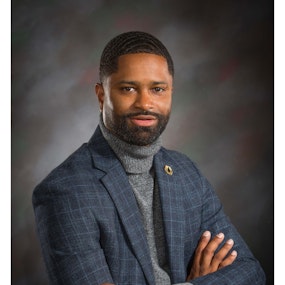
Marcus P. Nevius, Ph.D.
Associate Professor of History
Marcus P. Nevius, Ph.D. is associate professor of history at the University of Rhode Island, where he teaches courses in the history of slavery, the Revolution, Confederation, and Early Republican periods in the early United States; and, in the history of African Americans in the early American republic. Nevius holds a B.A. and M.A. in history from North Carolina Central University, and a Ph.D. in history from The Ohio State University.
He is the author of the book City of Refuge: Slavery and Petit Marronage in the Great Dismal Swamp, 1763-1856 (Georgia, 2020). He has authored review essays published in the William and Mary Quarterly, and in History Compass. He has published book reviews in the Journal of African American History, the Journal of Southern History, and H-Net Civil War.
Nevius is the recipient of research fellowships granted by the William L. Clements Library at the University of Michigan; the Special Collections Research Center of the Earl Gregg Swem Library at the College of William and Mary; the Virginia Museum of History and Culture; and the Fred W. Smith National Library for the Study of George Washington at Mount Vernon.

Jason Boroughs
Archaeologist
Jason Boroughs holds a PhD in anthropology from the College of William and Mary. With over 25 years of field experience excavating historic sites throughout America and the Caribbean, his research and publications focus on Atlantic plantation communities through enslavement and emancipation. He has held a variety of research and teaching positions in institutions such as the Colonial Williamsburg Foundation, Jamestown Rediscovery, and Salisbury University. He has served as Mount Vernon’s research archaeologist since 2016.
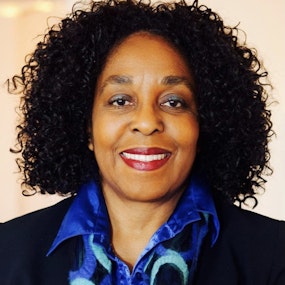
Brenda E. Stevenson
Inaugural Hillary Rodham Clinton Chair in Women's History, St. John's College, University of Oxford
Brenda E. Stevenson (Yale Ph.D.) is an internationally recognized scholar of gender, race, slavery, family and racial conflict. She currently is the inaugural Hillary Rodham Clinton Chair in Women’s History at St. John’s College at the University of Oxford. At UCLA, she served as the inaugural Nickoll Family Endowed Professor of History and Professor of African American Studies. A social historian, specific intellectual interests center on the comparative experiences of women, family, and community. Her published works include: Life in Black and White: Family and Community in the Slave South; The Contested Murder of Latasha Harlins: Justice, Gender and the Origins of the Los Angeles Riots; and What is Slavery? along with multiple edited volumes and articles on women, race, film and art.
Professor Stevenson’s research has garnered numerous awards, including the James Rawley Book Prize, the Ida B. Wells Barnett Award and the Gustavus Meyer Book Prize. Her research has been supported by, among others, the John Simon Guggenheim Memorial Foundation, the Ford and Mellon Foundations, the American Association of University Women, the Center for Advanced Study, the National Humanities Center and the American Academy in Berlin. She is the recipient of the John Blassingame Award for Mentorship and Scholarship, the Carter G. Woodson Medallion and Yale’s Wilbur Cross Alumni Medal.
Professor Stevenson is the past Chair of the Department of History and the Interdepartmental Program in African American Studies at UCLA. She is a Distinguished Lecturer for the Or… Read More
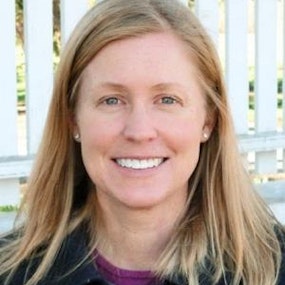
Dr. Eleanor Breen
City Archeologist, City of Alexandria
Eleanor Breen, Ph.D., is City Archaeologist for the City of Alexandria, VA. Breen joined the City in 2016 as a staff archaeologist in the Office of Historic Alexandria, and became acting City Archaeologist in 2017.
Most recently, she has been closely involved in the archaeological exploration at Fort Ward Park, the discovery of three historic ships and thousands of other small artifacts at the Robinson Landing site in 2018, and the conservation at Texas A&M University of the ship discovered at the Hotel Indigo site in 2015.
Prior to joining the City, Breen served in increasing leadership roles in archaeology at George Washington’s Mount Vernon from 2001 to 2016, culminating with her appointment as Deputy Director of Archaeology.
Breen earned a bachelor’s degree in anthropology from the College of William and Mary; a master’s degree in anthropology from the University of Massachusetts, Boston; and a doctoral degree in anthropology from the University of Tennessee, Knoxville. She has authored or co-authored dozens of publications and conference presentations. Breen currently serves as president of the Council of Virginia Archaeologists and is recognized on the national Register of Professional Archaeologists.